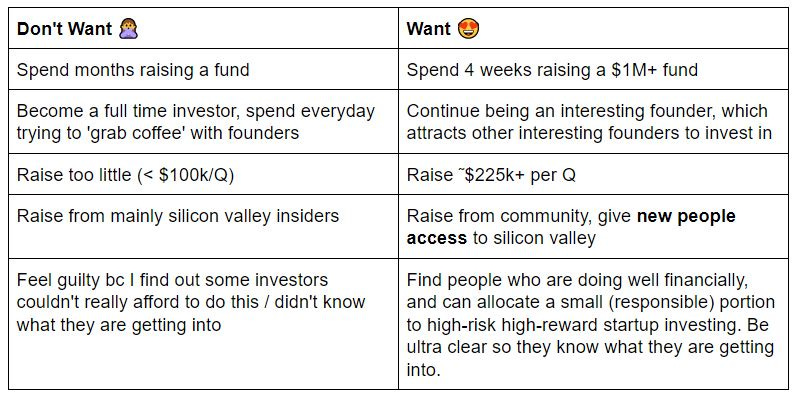More Shaan for you all today.
Shaan is a successful guy. In order to be successful, you need to do a little bit more than get lucky. It takes a unique will and confidence; sometimes even a special framework. And that’s what I’ll be sharing today:
Shaan Puri's 4 key components to his kickoff process.
Define "Winning"
Set "Anti-Goals"
Back of the envelope - what does it take to get there?
1 Hour, 1 Day, 1 Week, 1 Month
4 simple things. No hesitation or second thoughts. No additional research or worrying. No grand vision statements. And no asking people if they think it’s a good idea.
From Shaan:
#1 - Define Winning
Set clear, measurable goals. Not some long-winded monologue, but just 1-2 sentences about the outcome that includes a time frame and a # objective.
It should be "measurable" (or "failable"). Meaning, if you showed this to someone, they could figure out if you passed or failed.
"I want to achieve financial success and not stress about money!"
^^^terrible goal. What is 'success'? By when?
"I want to have $5M in liquid assets by age 35"
^^^a good simple goal
OK, the last trick here. Ambitious people want to set big goals. Conservative folks want to set modest goals. Which one should you do? Trick question - do both. I think of "success" as a spectrum. A range.
Good win - There's a minimum outcome, below that, and I put in more than I got out. I call this my "good win". It's solid.
F*ck Yea - This is self-explanatory. If I hit this outcome, I would say f*ck yea. Great outcome.
#2 - Anti-Goals
There's an old saying when it comes to deal-making. "You pick the price, I'll pick the terms." Basically - even if you get the price you want. If the terms are screwed up. You'll be screwed up.
I take 10 minutes to imagine all the plausible outcomes or side effects of pursuing this goal. Then I write them down like this:

#3 - Back of the Envelope, how might I get there?
I am a big fan of running quick numbers on things early on. Even when I have no clue how to achieve my goal - doing a quick calculation can show some of the options.
If I want to make a million dollars. I can make a $1 app and sell it to 1M users. Or I can create a $100k product and find 10 customers.
The back of the envelope is meant to walk through some scenarios, and identify which number seems "hard to hit". That becomes my focus. How do I get that number?
Then I brainstorm strategies to get to that number.
#4 - 1 Hour, 1 Day, 1 Week, 1 Month
This is the most important step. Never leave the scene of a decision without an action. Most people overthink things. They start with something that will take weeks or months to complete. The 1 week and 1 month stuff don't matter, I keep those rough. I'm really focused on the 1 hour and 1 day - because that's what I'm going to do first.
I do the opposite. I ask myself: "What's the 1 hour version of my plan?"
"What's something I could do in the next hour that would inch me closer to my first happy customer?" etc..
Then I immediately do that thing. Momentum is the lifeblood of any project, so I throw myself headfirst into creating initial momentum.


